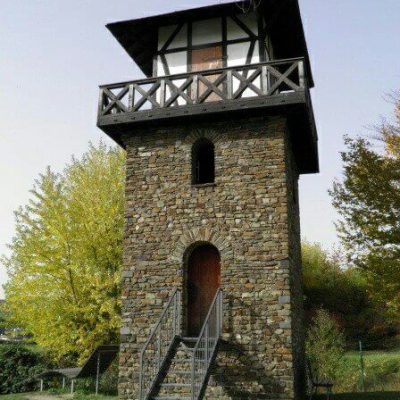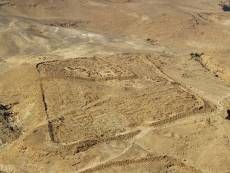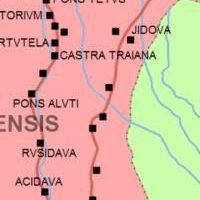Chapters
Limes means “road” or “border road”; later also “border”. Limes was a system of Roman border fortifications erected on the outskirts of the Empire, especially exposed to invasions. These fortifications marked the boundaries of the Roman empire. The plural of limes is limites, and the term comes from the name of the road that separates the parcels of land.
The word limes was used by Roman writers to denote geographically shaped or fortified borders. In modern times, this term has been extended by historians who began to use limes to describe all the boundaries of the Roman Empire. For example, Hadrian’s wall in the north of England is sometimes referred to as limes Britannicus; in turn, the border in the province of Arabia Petraea – separates the desert – limes Arabicus. Thus, the Romans themselves did not use the term only to define the boundaries of their possessions.
Roman limites, at the time of the greatest extent of Roman power (2nd century CE), were 5,000 kilometres, from the northern coast of Britain on the Atlantic Ocean to the Black Sea, Red Sea and through North Africa again to the Atlantic Ocean.
The system of fortifications on limites fulfilled its role mainly in the 1st to 4th centuries CE, in places also in the 5th century CE. it was defended by fortified castra stationed nearby legions in the strength of several to several tens of thousands of people. Some elements of the fortifications were destroyed, others rebuilt, and some have survived to our times. The two limes sections in Germany run 550 km from the northwest of the country to the Danube in the southeast. In Britain, a 118 km long Hadrian’s Wall was built (built in the years 121-129 CE), which secured Roman gains in Britain. This wall perfectly depicts the organization of the Roman military zone and illustrates the defensive techniques and geopolitical strategies of ancient Rome. In 142 CE Emperor Antoninus Pius began the construction of 60 kilometres of fortifications which were to secure the Romans’ further conquests in the north.
Large castra camps were supplemented by fortresses (castella) and towers (burgs) erected at regular distances. In areas devoid of natural obstacles, stone walls, earth embankments, moats and palisades were erected, connecting the guard posts into a series of fortifications.
Specific forms of military installations on the frontiers of the Roman Empire include the so-called fossatum in North Africa. In the province of Mauritania Tingitana, a deep ditch (fossa) was the basic element of the border fortifications. Cases of building systems for defence and early warning far beyond the actual borders of the Roman Empire can also be considered exceptional. This is the situation in the southwestern part of Crimea (ancient Tauris). Roman troops from the province of Moesia Inferior (Moesia Inferior) erected forts and watchtowers surrounded by a wall and a moat. Such a system, consisting of several towers and most likely one fort, was built by the Roman army on the borders of Chersonesos Taurida. It was then an independent city-state (polis) allied with Rome.
Roman writers presented limes as a kind of “sacred boundary” that people did not cross. Even if they crossed it, it was crossing the border of common sense and civilization. Thus, crossing the border was only in the nature of “barbarians”.
One more thing about Britain is worth mentioning. The year 84 CE is considered very significant in the history of Britain. It seems to mark the beginning of intensive earthworks and construction works aimed at securing the areas on the island conquered by the Romans. In the mid-1980s, the construction of a defence and communication system was started, located on the border of today’s England and Scotland, known in the literature as Stanegate Line. It cut across Britain, as it were, connecting Solway Bay in the west with the Tyne Estuary in the east. This Stanegate Line formed a ditch and an earthen bank that sheltered the road that ran parallel on their south side. The aforementioned route provided the possibility of a quick connection between the original wooden, small forts. We locate them, going from the west, in today’s towns of Kirbridge, Carlisle, Stanwix, Nether Denton, Chesterholm and Corbridge. The impulse for intensive research and reconstruction of some elements of this system was the discovery of over five hundred fragments of texts covered with thin sheets of wood, unearthed in the place of a former dump, in the Roman fort Vindolanda (near the aforementioned Chesterholm). Launched in the last fifteen years, the Stanegate Line was a kind of testing ground in the construction and at the same time an element of the defensive belt known as Hadrian’s Wall.
The most important Roman limites
Hadrian’s Wall
Hadrian’s Wall (Vallum Hadriani) was erected in the years 121 – 129 CE by Emperor Hadrian. It was the symbolic northern border of the Roman Empire in Britain. The fortifications ran from Bowness on Solvay Bay to Wallsend on the River Tyne for about 80 Roman miles, or 120 km.
This impressive piece of military engineering was built in just a few years. The main builders were the legionaries stationed there (3 legions) and auxiliary troops because the army was used to work on the borders. Hadrian’s border became home to 10,000 soldiers.
Antoninus Wall
The construction of the wall began in 142 CE and ended in 144 CE The rampart ran through the central belt of Scotland, on the natural line of the Forth-Clyde narrowing. It was half shorter than Hadrian’s Wall and thus easier to defend.
The construction of the Antoninus embankment was officially decided by Emperor Antoninus Pius, at the request of the governor of Brittany, Quintus Lollius Ubricus.
His decision was due to the fierce attacks of the Caledonians on Roman territory. The wall was primarily intended to replace Hadrian’s Wall, built some 160 kilometres to the south, which meant that the Romans wanted to continue conquering the areas to the north. Ultimately, however, the expansion failed because the Picts could not be defeated. Thus, the Antoninus Wall remained the northernmost strip of Britain. The area above the wall was called Caledonia by the Romans, and the area between the ramparts was called “Old North”.
Trajan’s Wall
Trajan’s Wall (Valul lui Traian) is the term used for several series of earthen fortifications (valla) discovered in Eastern Europe in Moldova, Romania and Ukraine. Interestingly, this system of fortifications was not built by the Romans during the reign of Emperor Trajan. It is possible that the scholars of the 19th century gave these fortifications such a name. They probably did so to awaken the local population and encourage them to fight for independence.
There are three valla in Romania. The oldest and smallest vallum is 61 kilometres long and stretches from Cetatea Pătulului on the Danube to today’s city of Constanta on the Black Sea. Entirely made of earth, it had no defensive structures; however, it had a moat in the southern part. According to scientists, the purpose of this earthwork was to protect the population living in the north from the enemy from the south. The second vallum is 54 kilometres long and in some sections covers the smaller embankment. It starts on the Danube and ends in Palas, west of the city of Constanta. The average height of the embankment is 3.5 meters. There were moats on both sides. 63 fortifications were built on the rampart: 35 larger ones (castra) and 28 smaller ones (castella). The average distance between the fortifications is 1 km. The last vallum was also made of earth, but there was a stone wall on top of the rampart. The embankment was 59 kilometers long and stretched from the south of the city of Axiopolis (today’s Cernavodă) to the Black Sea coast. The agger was 1.5 meters high while the wall on top was 2 meters high. The rampart had a moat in the northern part and 26 fortifications. The distance between them was from 1 to 4 kilometers.
Map showing Roman fortifications in present-day Romania and nearby areas
There are remains of earth embankments and palisades in Moldova. Two large fragments of limes in these lands have been preserved: Trajan’s Upper Wall and Trajan’s Lower Wall. The lower wall dates back to the 3rd century CE and was built by Antharyk, king of the Terwings. The embankment stretches between the banks of the rivers Gerasius (present Prut) and the Danube to the land of Taifali (present Oltenia). It is probable that this rampart replaced the old limes – Limes Transalutanus. The upper wall, in turn, was to be built in the 4th century CE at the request of the Goths, in order to protect the borders against the Huns. Its length is 120 kilometers from the Dniester River to the Prut River.
In Ukraine, Trajan’s wall is located in Podolia and stretches from the present Kamianets-Podilskyi, through Novaya Ushitsa, to the city of Khmelnytsky.
Limes Germanicus
Limes Germanicus was a strip of frontier fortifications that protected and secured the Roman provinces of Germania Inferior, Germania Superior and Raetia, and separated the Roman Empire from the Germanic tribes between CE 83-260 At its height, the limes stretched from the mouth of the Rhine to the North Sea as far as Regensburg on the Danube. These two great rivers were natural obstacles to massive invasions into Roman territory. The exception was the gap stretching from Mogontiacum (now Mainz) on the Rhine to Castra Regina (now Regensburg) on the Danube.
Limes consisted of three episodes:
- The Lower Limes Germanicus, which stretched from what is now Katwijk (Netherlands) and the North Sea along the Lower Rhine;
- The Upper Limes Germanicus, which stretched from the Rhine in what is now Rheinbrohl, through the Taunus Mountains to the Main River, along its course to what is now Miltenberg, and from Osterbrucken in a straight line south (about 70 km);
- Limes Raetiae stretched east of Lorch on the Danube.
The total length of the limes was 568 kilometers. The border had at least 60 forts and 900 watchtowers. Potentially the weakest but best guarded section of the border was the section between what is now Mainz and Regensburg. This 300 km corridor of land between two great rivers made it possible to move large groups of people without the need for sea transport. In this area there was a large concentration of forts and watchtowers, which were located in many lines, along roads, rivers, fords and peaks.
The first emperor to start building fortifications along the borders was Octavian Augustus. The decision to strengthen the borders of the empire was made after the ignominious defeat of the Roman legions in the Teutoburg Forest in 9 CE Originally there were many walls, which over time were connected into the Upper Limes Germanicus, along the Rhine, and the Limes Raetiae, along the Danube. Later, these two walls were connected by one tight border.
From the death of August (14 CE) CE 70 CE, Rome accepted a water boundary in Germania in the form of the Rhine and the upper Danube. In addition to these rivers, the Romans controlled the fertile plain (present-day Frankfurt) opposite the Moguntiacum (present-day Mainz), the southernmost slopes of the Black Forest, and several bridges. The northern section of the Rhine, which was very deep and wide, remained the Roman frontier until the fall of the empire. The upper Rhine and the upper Danube, on the other hand, were easy to cross. The boundary that the Romans shaped in this section was extremely long and inconvenient. This border took the form of a wedge cutting into the barbarian lands (from today’s Baden to Württemberg).
The invasion of the Germans in the late 3rd century CE forced the Romans to abandon the Upper Limes Raetian and shift their line of defence to the Rhine, Iller and Danube rivers. Some support was provided by navis lusoria fast river boats, which were standard boats that could quickly reach outposts and crisis sites. Observation towers remained in visual contact, and castra were located in important passages (e.g. Castrum Rauracense near Basel) or at the back of the front (e.g. Vindonissa in Switzerland).
Limes Arabicus
Limes Arabicus was the Roman frontier in the desert, in the province of Arabia Petraea. At its greatest extent, it was 1,500 kilometres from northern Syria to southern Palestine and northern Arabia. This border was part of a longer system of Roman borders in the region. Limes had several forts and watchtowers. The purpose of this border was to protect the Roman province of Arabia Petraea from the attacks of barbarian tribes from the Arabian desert.
Near the limes, Trajan commissioned the construction of a major road, the Via Nova Traiana, which stretched from Bostra to Aila (now Aqaba) on the Red Sea and was about 430 kilometres long. In the years 111-114 CE, its main task was to ensure the efficient transport of soldiers and the Roman administration. The construction of the road ended during the reign of Emperor Hadrian.
During the Severan dynasty (193-235 CE), the Romans strengthened their frontier in this region. Several forts were built at the northwest end of the Wadi Sirhan valley and the number of roads was repaired and expanded.
Around 300 CE, the emperor Diocletian divided the province of Arabia by incorporating the southern part of the province into the province of Palestine. Later in the 4th century CE, the southern part of the region was detached and became an independent administrative unit (Palaestina Tertia). Each province was governed by a civil governor (praeses) and a military governor (dux).
Emperor Diocletian began a series of actions to strengthen Roman rule in the region. Several forts (castellas), watchtowers and fortresses were built in the desert hills east of the Via Nova. Limes were extended from the south from Damascus to Wadi al-Hasa. The region from Wadi Mujib to Wadi al-Hasa had four castellas and one Roman camp.
The border zone south of Wadi al-Hasa was called limes Palaestina and extended to Aila. There were ten castellas and one Roman camp in this area. Roman camps were placed every 100 km to create a line of safety.
Limes Alutanus
Limes Alutanus was a line of fortifications, consisting of a vallum, built from north to south, on the east side of the Aluta River, and seven castra (as depicted in the Tabula Peutingeriana, a map showing military road links of the Roman Empire). Limes Alutanus was the eastern border of the Roman province of Dacia.
The construction of fortifications was commissioned by Emperor Hadrian to prevent possible invasions from the east. The seven camps mentioned are: Pons Vetus (Câineni, Vâlcea); Praetorium (Racoviţa, Valcea); Arutela (point “Poiana Bivolari”, near the present city of Călimăneşti); Castra Traiana (Sânbotin, Valcea); Buridava (Stolniceni, Valcea); Pons Aluti (Ionestii Govorei); Rusidava (Drăgăşani).
Limes Transalutanus
More content
Limes Transalutanus is a system of fortified borders of the Roman empire that was built on the western edge of the forests of what is now Teleorman County in the Roman province of Dacia (Romania). The border consisted of a road just in front of the border, a fortress, a three-meter vallum (10-12 meters wide), rows of wooden palisades, stone defensive walls and a ditch. Limes was 235 kilometres long, as was the nearby Aluta River. It was located 5-30 kilometres west of the fortifications.
The construction of the structure was started in 107 CE and was under the command of Marcius Turbo. The next stage of work was supervised by Julius Severus (120-126 CE). The last stage of construction was supervised by Septimius Severus (193-211 CE).
In the period 244-247 CE, during the reign of Emperor Philip I the Arab, the Romans left the border for some time (due to the constant attacks of the Getae and Carps). Then they returned, but not for long.
Limes Moesiae
Limes Moesiae was a Roman system of border fortifications that consisted of three defensive lines between the Black Sea coast and the Danube. In addition, there were two lines of fortifications in Wallachia: the “wall of Constantine” and the “limes Transalutanus”.
Limes were founded in the Danube Delta probably during the reign of Trajan. Between the 2nd and 3rd centuries CE, the frontier was expanded and abandoned. The Limes consisted of three sections: the first was in the south between what is now Constanta and the Danube (called “Trajan’s wall”); the second north of the Danube Delta (called “Lower Trajan’s Wall” in Moldavia or “Athnarica Wall”); and the third in central Moldova from the Prut River to the Dniester (called the “wall of the Greutungs”).
All these sections consisted of three-meter-high and two-meter-wide earth embankments. They were very similar to the dikes found in Britain and Wales. Not far from the limes Moesiae, there are two other limes that were responsible for the defence of Moesia and Dacia: the Wall of Constantine (also called Brazda lui Novac de Nord), which was built in Wallachia in 330 CE and was 300 kilometres long, and the Transalutanus limes, which was probably under Hadrian and was supposed to protect Roman Dacia from the southern Carpathians to the Danube.
The Roman occupation of the plain between the Carpathian foothills and the Danube probably began at the end of Trajan’s First Dacian War (101/102 CE). Most of the forts in the area, however, come from the end of the Dacian Wars (106 CE). Leaving Moldavia by the Romans and building the limes Transalutanus fortifications is attributed (not entirely correctly) to Emperor Hadrian. There are also voices that the Romans left Dacia during the reign of Galien (CE 260-268) or around 275 CE when Aurelian created a new province in Dacia, south of the Danube.
The extent of Roman rule in the region in the late period of the Roman state is not entirely clear. One of the Roman forts (Pietroasa de Jos), located far beyond the limes, close to today’s Moldavia, shows that the Romans were still present there in the 4th century CE.

















